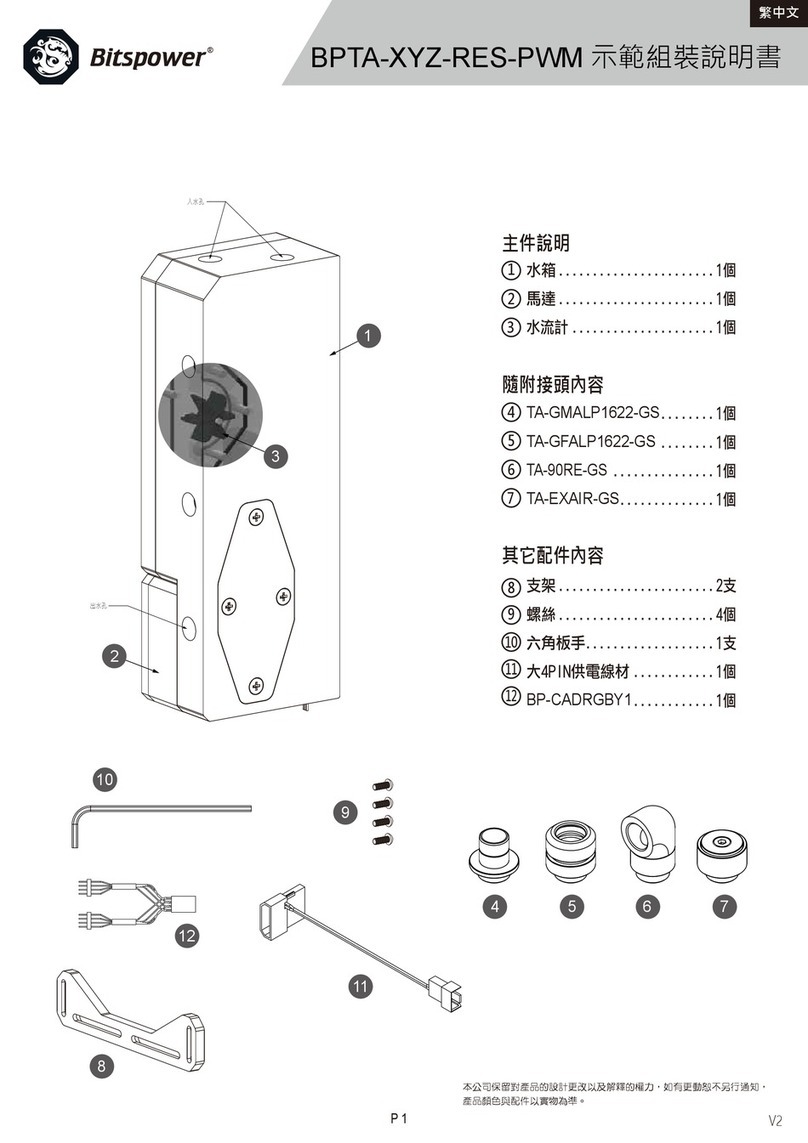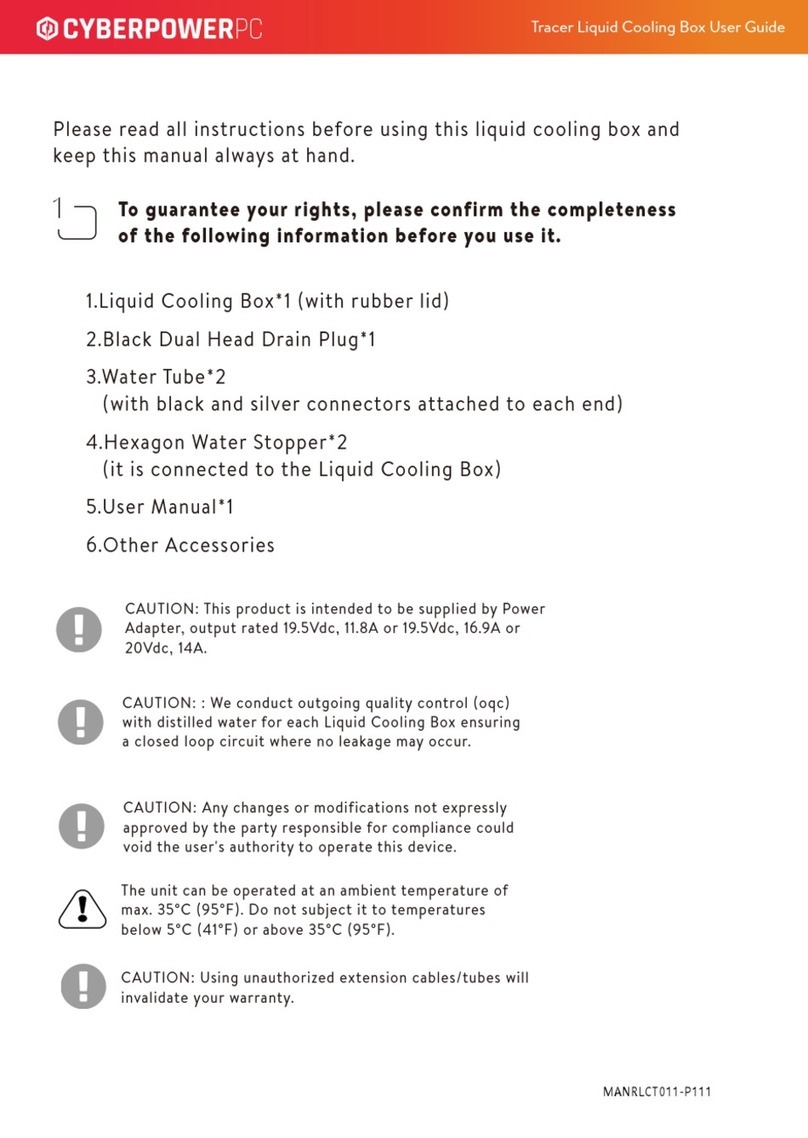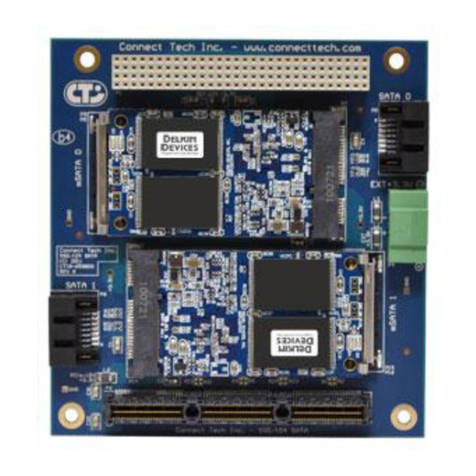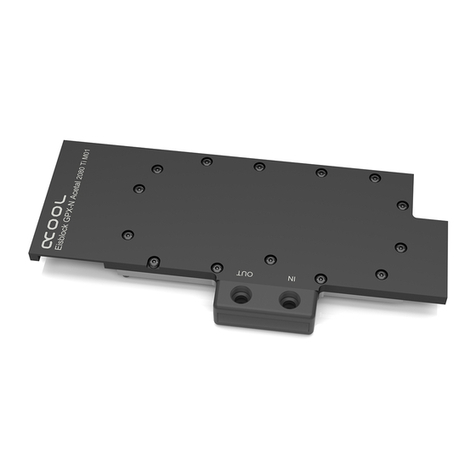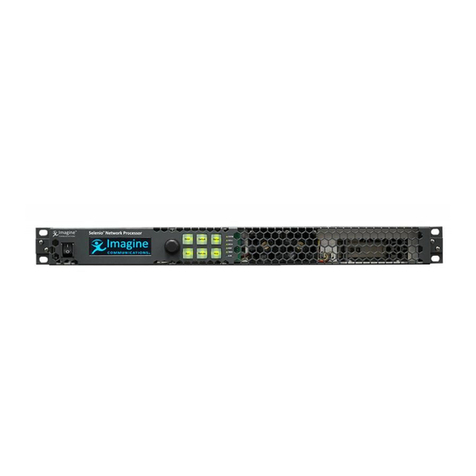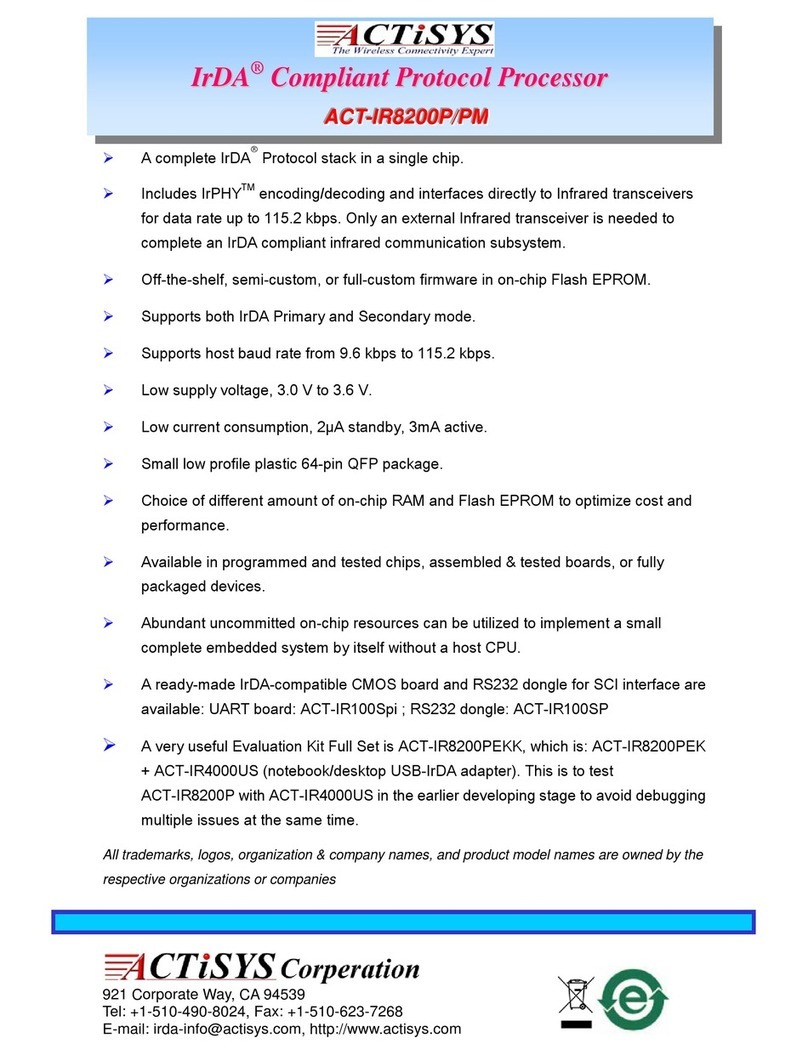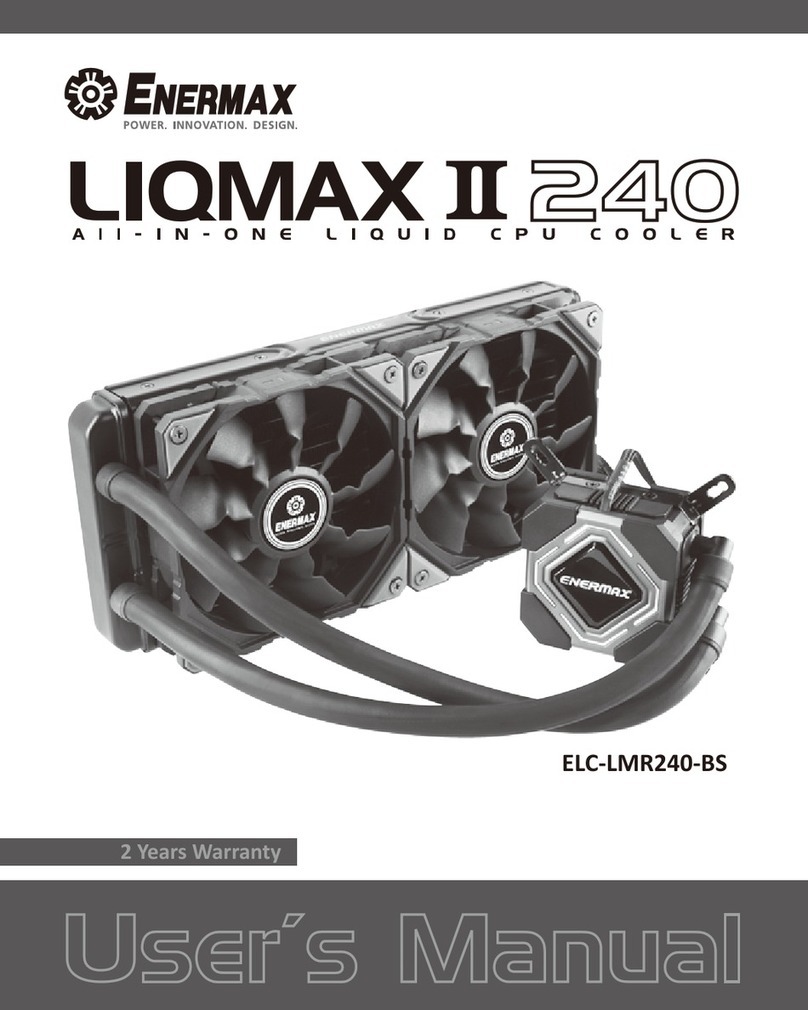EMAC SoM-A5D35 User manual

SoM-A5D35
User Manual
REV. 1.6
For use with PCB Revision 1 and greater SoMs
Copyright 2015,
EMAC, Inc.
Phone: (618) 529-4525 www.emacinc.com

1
Table of Contents
Disclaimer......................................................................................................................................................2
1Introduction ............................................................................................................................................3
1.1 Features.........................................................................................................................................3
2Hardware ...............................................................................................................................................4
2.1 Specifications.................................................................................................................................4
2.2 Real-Time Clock ............................................................................................................................6
2.3 Watchdog Timer ............................................................................................................................6
2.4 External Connections.....................................................................................................................6
2.4.1 External Bus .............................................................................................................................7
2.4.2 JTAG.........................................................................................................................................7
2.4.3 One-Wire / I2C..........................................................................................................................8
2.4.4 Ethernet....................................................................................................................................8
2.4.5 USB ..........................................................................................................................................9
2.4.6 SPI............................................................................................................................................9
2.4.7 MCI Multimedia Card..............................................................................................................10
2.4.8 Serial Ports.............................................................................................................................10
2.4.9 I2S ..........................................................................................................................................11
2.4.10 CAN...................................................................................................................................11
2.4.11 GPIO..................................................................................................................................12
2.5 Power Connections......................................................................................................................14
2.6 Boot Options................................................................................................................................14
2.7 Serial Flash..................................................................................................................................14
3Design Considerations.........................................................................................................................14
3.1 The EMAC SoM Carrier SoM-150ES ..........................................................................................15
3.2 Power...........................................................................................................................................15
3.2.1 Legacy....................................................................................................................................15
3.2.2 Analog Reference...................................................................................................................15
3.2.3 Shutdown Logic Pins..............................................................................................................15
3.2.4 Battery Backup .......................................................................................................................16
3.2.5 Analog Voltage .......................................................................................................................16
4Software...............................................................................................................................................17
4.1 Das U-Boot ..................................................................................................................................17
4.2 Embedded Linux..........................................................................................................................17
4.2.1 Linux with Xenomai Real Time Extensions ............................................................................17
4.2.2 Linux Packages ......................................................................................................................17
4.2.3 Linux Patches.........................................................................................................................18
4.3 Qt Creator....................................................................................................................................18
4.4 ARM EABI Cross Compiler..........................................................................................................18

2
Disclaimer
EMAC Inc. does not assume any liability arising out of the application or use of any of its products or
designs. Products designed or distributed by EMAC Inc. are not intended for, or authorized to be used in,
applications such as life support systems or for any other use in which the failure of the product could
potentially result in personal injury, death or property damage.
If EMAC Inc. products are used in any of the aforementioned unintended or unauthorized applications,
Purchaser shall indemnify and hold EMAC Inc. and its employees and officers harmless against all claims,
costs, damages, expenses, and attorney fees that may directly or indirectly arise out of any claim of
personal injury, death or property damage associated with such unintended or unauthorized use, even if it
is alleged that EMAC Inc. was negligent in the design or manufacture of the product.
EMAC Inc. reserves the right to make changes to any products with the intent to improve overall quality,
without further notification.

3
1 Introduction
This document describes EMAC’s SoM-A5D35 System on Module. The SoM-A5D35 is designed to be
compatible with EMAC's 144-pin SODIMM form factor. This module is built around the ATMEL
AT91SAMA5D35 microcontroller, which provides several of its key features.
The SoM-A5D35 has an onboard Ethernet PHY, 6 serial ports, 3 USB 2.0 ports, an I2S audio port, an MMC
port, a RTC, a programmable clock synthesizer, onboard eMMC flash, Serial NOR Flash, and LPDDR2.
In addition to these standard SoM features, the SoM-A5D35 also features a fast 32-bit core, open source
software support, and a wide range of controller IO pins.
1.1 Features
▪Small, 144 pin SODIMM form factor (2.66" x 1.5")
▪Atmel ARM Cortex-A5 ATSAMA5D35 536MHz Processor
▪10/100BaseT Ethernet with on-board PHY
▪16 bit External Bus Interface
▪6 Serial ports, one with full handshake and one with CTS/RTS handshake
▪2 USB 2.0 (High Speed) Host ports
▪1 USB 2.0 (High Speed) Device/Host port
▪512 MB of LPDDR2

4
▪4 GB of Resident eMMC Flash
▪16 MB of Serial NOR Flash
▪Battery-backed Real-Time Clock
▪SD/MMC Flash Card Interface
▪2 SPI ports
▪2 I2C Ports
▪1 I2S Audio Port
▪2 CAN Bus Interfaces
▪Timer/Counters and Pulse Width Modulation (PWM) ports
▪4-Channel 12-bit Analog-to-Digital converter
▪Typical power requirement less than 1 Watt
▪JTAG for debug, including real-time trace
▪FREE QT Creator IDE with GCC and GDB development tools
2 Hardware
2.1 Specifications
▪CPU: Embedded Atmel ATSAMA5D35 processor running at 536 MHz.
▪Flash: 4GB eMMC Flash and 16MB of Serial NOR Flash.
▪RAM: 512MB 133MHz LPDDR2.
▪Flash Disk: 4-bit Parallel or SPI serial SDHC/MMC interface.
▪System Reset: Supervisor with external Reset Button provision.
▪RTC: Real-Time Clock/Calendar with battery-backed provision using 32-bit free running counter.
▪Timer/Counters: 2, 3-channel, 32-bit timers/counters with capture, compare, and PWM.
▪Watchdog Timer: External Watchdog Timer (MAX6747).
▪Digital I/O: 32 General Purpose I/Os with 16 mA drive when used as an output
▪Analog I/O: 4-channel, 12-bit Analog-to-Digital converter (ADC)
▪Power: Power Management Controller allows selectively shutting down on-processor I/O
functionality and running from a slow clock.
▪JTAG: JTAG for debug, including real-time trace

5
▪CLOCKS: PLL synthesized 8MHz, 200KHz, 14.3MHz clock outputs
2.1.1.1 Serial Interfaces
▪UARTS: 6 serial TTL level serial ports with Auto RS485 and some with handshaking
(each UART requires external RS level shifting).
▪SPI: 2 High-Speed SPI ports with Chip Selects.
▪Audio: I2S Synchronous Serial Controller with analog interface support
▪USB: Dual USB 2.0 High Speed Host and single USB 2.0 High Speed Device ports
2.1.1.2 Ethernet Interface
▪MAC: ATSAMA5D35 on chip MAC
▪PHY: Micrel KSZ8081 low power PHY with software shutdown and slow clock modes
▪Interface: IEEE 802.3u 10/100 BaseT Fast Ethernet (requires external magnetics and Jack)
2.1.1.3 Bus Interface
▪Local ARM ATSAMA5D35 Bus accessible through card fingers provides 22 address lines, 16
data bus lines, and control lines.
2.1.1.4 Mechanical and Environmental
▪Dimensions: SODIMM form factor with the length dimension extended (2.66" x 1.5")
▪Power Supply Voltage: +3.3 Volts DC +/- 5%
▪Power Requirements:
▪Typical 3.3 Volts @ 175 mA (less than 1 watt)
▪Maximum current draw during boot process: 210 mA
▪Constant busy loop: 180 mA
▪Idle system: 160 mA
▪Idle system with Ethernet PHY disabled: 65 mA
▪APM sleep mode with Ethernet PHY disabled: 9.5 mA
▪APM sleep mode with Ethernet PHY and USB disabled: 4.0 mA
▪APM sleep mode with Ethernet PHY enabled: 60 mA
▪Operating Temperature: -40 to 85° C (-40 to 185° F), fan-less operation
▪Operating Humidity: 0% to 90% relative humidity, non-condensing

6
2.2 Real-Time Clock
The SoM-A5D35 has an embedded Real-time Clock. Battery backup is provided from the carrier board
using the VSTBY pin. The SoM-A5D35 will retain the RTT value register during reset and hence use it as
a RTC. The RTC has the provision to set alarms that can interrupt the processor. For example the processor
can be placed in sleep mode and then later awakened using the alarm function.
2.3 Watchdog Timer
The SoM-A5D35 provides an external Watchdog Timer/ Supervisor (MAX6747) with an extended watchdog
timeout period of 1.42 seconds (±10%). Upon power-up the Watchdog is disabled and does not require
pulsing. To start the Watchdog it must first be enabled. This is done by configuring port line PA24 as an
output and setting it low in software. Once enabled, the Watchdog should be pulsed, using port line PA23,
continually every 1.28 seconds or faster to prevent the Watchdog from timing out and resetting the module.
If the user is using the watchdog to force a system reset, the watchdog may need up to 1.56 seconds of
inactivity before the watchdog reset will occur. The watchdog is automatically disabled upon reset but it can
also be disabled by setting PA24 high.
2.4 External Connections
The SoM-A5D35 connects to a carrier board containing its connectors, power supply and any expansion
IO, through a standard ENIG-plated (Electroless Nickel Immersion Gold) SODIMM 144 pin connection (top
half shown below).
The SoM model will fit in any standard 144-pin SODIMM socket. These connections are designed to be
compatible with all EMAC 144-pin SoM products. See EMAC SoM 144-pin SODIMM Pinout Specification
to see how other 144-pin SoMs pin-outs line up with the SoM-A5D35’s pin-out.
The use of the SODIMM form-factor for EMAC’s SoMs is a sound choice that has been proven rugged and
reliable in the laptop market.
The remainder of this section describes the pin-out as it applies specifically to the SoM-A5D35 processor.

7
2.4.1 External Bus
The SoM-A5D35 provides a flexible external bus for connecting peripherals. The WKUP pin has a
Maximum input voltage of 3.3V (pulled up on-module to 3.3V) and Shutdown has a maximum output
voltage of 3.3V. The Flash WP for the Serial Flash is active-low and pulled up on-module.
SODIMM Pin#
SoM
Pin Name
Processor
Pin Name(s)
Description
100
GP_CS1
NCS1/PE27
General Purpose Processor
Chip Select CS2
98
GP_CS2
NCS2/PE28
General Purpose Processor
Chip Select CS4
108
GP_CS3
NCS3
General Purpose Processor
Chip Select CS5
16
~OE
NRD
Read Signal
83
~WR
NWE
Write Signal
6
~RST_IN
SOM_RST_OUT
Processor Reset
43
~RST_OUT
NRST
Processor Reset
44
~EA
SHDN
Shutdown Control
85
Flash WP
Serial Flash WP
Serial Flash Write Protect
72
ALE/~TS
WKUP
Wake-Up Input
26,35,33,31,
28,109,111,
113,10,12,18,14,37,5,11,9,7,13,97,17,
15,104
A0-A21
A0-A21
Address Bus
29,27,25,22,
23,21,19,20,
8,24,34,70,
77,81,84,86
D0-D15
D0-D15
Data Bus
2.4.2 JTAG
The SoM specification allows for access to the JTAG lines for the ATSAMA5D35 processor. These
connections will allow the Flash to be programmed in-circuit via a program running from the processor
and also the capability to debug software.
Processor JTAG
SODIMM
Pin#
SoM
Pin Name
Processor
Pin Name(s)
Description
139
JTAG_TCK
TCK/SWCLK
JTAG clock
137
JTAG_TDI
TDI
JTAG serial in
138
JTAG_TDO
TDO
JTAG serial out
140
JTAG_TMS
TMS/SWDIO
JTAG operation mode
112
JTAG_TRST
NTRST
Test Reset Signal

8
2.4.3 One-Wire / I2C
The SoM specification calls for a one-wire port. Since the SoM-A5D35 does not have a one-wire port, this
line is not connected for One-Wire Operation. The ATSAMA5D35 processor does provide an I2C bus and
so these pins are dedicated to that function although they can also be used as GPIOs.
One-Wire / I2C Port
SODIMM
Pin#
SoM
Pin Name
Processor
Pin Name(s)
Description
116
LOCAL1W
/SCL
TWCK0/PA31
I2C Clock
88
SDA
TWD0/PA30
I2C Data
2.4.4 Ethernet
The SoM-A5D35 provides a Micrel KSZ8081 Low Power Ethernet RMII PHY IC on board. Carrier designers
need only run these lines through the appropriate magnetics layer to have a functional Ethernet connection.
Remember the RX and TX lines are differential pairs and need to be routed as such.
The LED/configuration pins’ state at reset determines the Ethernet’s configuration (10-baseT, 100-base-T,
autoconfig) and the function of the LED’s. The SoM-100ES and the SoM-150ES pull them all high, which
configures the chip for network autoconfig, with LED0 functioning as active low link, and LED1 functioning
as active low Rx Activity (Refer to Carrier schematics).
The Ethernet PHY can be put into a low power mode by writing directly to the MAC via software.
Additional power can be saved by turning off the PHY Oscillator. This is done by setting GPIO PC10 low.
Make sure to send software commands to the PHY to put it into slow clock and power-down mode before
shutting off the Oscillator. When restoring the PHY first turn the Oscillator on and disable slow clock mode
before accessing the PHY.
Ethernet
SODIMM
Pin#
SoM
Pin Name
KSZ8081
Pin Name
Description
89
LED_LINK/
CFG_1
LED_0
NWAYEN
Ethernet Link LED
Configuration Pin
90
LED_RX/
CFG_2
LED_1
SPEED
Ethernet Activity LED
Configuration pin
94
Ethernet_Rx-
RXM
Low differential Ethernet
receive line
92
Ethernet_Rx+
RXP
High differential Ethernet
receive line
93
Ethernet_Tx-
TXM
Low differential Ethernet
transmit line
91
Ethernet_Tx+
TXP
High differential Ethernet
transmit line

9
2.4.5 USB
The SoM-A5D35 provides 2 High speed USB 2.0 Host ports and 1 High Speed USB 2.0 Device/Host port.
The USB Device/Host port can be used as an “On-The-Go”-like port on custom carriers. The Device/Host
port is connected to a USB Type B connector on the SoM-100ES and SoM-150ES carrier boards.
USB
SODIMM
Pin#
SoM
Pin Name
Processor
Pin Name(s)
Description
64
USB1_D+
HHSDPB
Host, High Speed USB 1
66
USB1_D-
HHSDMB
Host, High Speed USB 1
65
USB2_D+
HHSDPC
Host, High Speed USB 2
67
USB2_D-
HHSDMC
Host, High Speed USB 2
60
USB3/OTG_D-
H/DHSDMA
Device/Host, HS USB 3
61
USB3/OTG_D+
H/DHSDPA
Device/Host, HS USB 3
45
USB_OTG_VBUS
AD10/PD30
USB OTG VBUS Detect
2.4.6 SPI
The ATSAMA5D35 processor provides a dual (SPI0 and SPI1) SPI module for communicating with
peripheral devices. On the SoM the SPI0 bus is already connected to the serial flash, which uses
SPI0_NPCS0 (SPI0_NPCS0 is not brought out to the card fingers). The first Table below lists the lines for
the #0 SPI module. The SoM pin specification allows for three SPI chip selects. The SPI chip selects
available to the card edge are SPI0_NPCS1, SPI0_NPCS2, and SPI0_NPCS3. The second Table below
lists the lines for the #1 SPI module.
Serial Peripheral Interface
SODIMM
Pin#
SoM
Pin Name
Processor
Pin Name(s)
Description
122
SPI0_MI
SPI0_MISO/PD10
SPI0 serial data in
121
SPI0_MO
SPI0_MOSI/PD11
SPI0 serial data out
120
SPI0_SCK
SPI0_SPCK/PD12
SPI0 serial clock out
123
SPI0_CS0
SPI0_NPCS1/PD14
SPI0 slave select line 0
124
SPI0_CS1
SPI0_NPCS2/PD15
SPI0 slave select line 1
110
SPI0_CS2
SPI0_NPCS3/PD16
SPI0 slave select line 2
SODIMM
Pin#
SoM
Pin Name
Processor
Pin Name(s)
Description
133
SPI1_MISO/GPIO
SPI1_MISO/PC22
SPI1 serial data in / GPIO
134
SPI1_MOSI/GPIO
SPI1_MOSI/PC23
SPI1 serial data out / GPIO
135
SPI1_SCK/GPIO
SPI1_SPCK/PC24
SPI1 serial clock out / GPIO
136
SPI1_NPCS0/GPIO
SPI1_NPCS2/TWCK1/PC27
SPI1 slave select line 0 / GPIO
105
SPI1_NPCS1/GPIO
SPI1_NPCS1/TWD1/PC26
SPI1 slave select line 1/ GPIO

10
2.4.7 MCI Multimedia Card
The ATSAMA5D35 processor provides a 4-bit MMC/SD card interface using the MC lines.
The SoM-100ES Carrier board uses a serial SPI based MMC/SD interface. The SoM-A5D35 could be
programmed to use this serial interface, however the drivers provided are written to utilize the 4-bit
interface and as such required the SoM-150ES Carrier board to use these drivers.
MMC/SD Card Interface
SODIMM
Pin#
SoM
Pin Name
Processor
Pin Name(s)
Description
54
MCI_CK
MCI0_CK/PB24
MCI Clock
51
MCI_CDA
MCI0_CDA/PB19
MCIA Command
50
MCI_DA0
MCI0_DA0/PB20
MCIA D0
55
MCI_DA1
MCI0_DA1/PB21
MCIA D1
56
MCI_DA2
MCI0_DA2/PB22
MCIA D2
57
MCI_DA3
MCI0_DA3/PB23
MCIA D3
42
MCI_CD
TIOB1/PC13
MCIA Card Detect
2.4.8 Serial Ports
The SoM-144 pin specification has the provision for 3 serial ports. However, the ATSAMA5D35 provides 6
serial ports so the 3 additional serial ports are accommodated through the use of alternate SoM pins.
UART1 on the ATSAMA5D35 processor provides handshaking pins, however the RING, DSR, DCD, and
DTR signals are not available on the processor and are generated by software using GPIOs.
Serial Ports
SODIMM
Pin#
SoM
Pin Name
Processor
Pin Name(s)
Description
71
COMA_RXD
RXD0/PD17
UART0 Receive/GPIO
73
COMA_TXD
TXD0/PD18
UART0 Transmit/GPIO
38
COMB_RXD
RXD2/PE25
UART2 Receive/GPIO
36
COMB_TXD
TXD2/PE26
UART2 Transmit/GPIO
82
COMB_RTS/GPIO
RTS2/PE24
UART2 RTS/GPIO
78
COMB_CTS/GPIO
CTS2/PE23
UART2 CTS/GPIO
103
COMC_RXD
RXD1/PB28
UART1 Receive/GPIO
102
COMC_TXD
TXD1/PB29
UART1 Transmit/GPIO
107
COMC_DSR/GPIO
PWMH1/PA22
UART1 DSR /GPIO
106
COMC_DTR/GPIO
PWMH2/PB8
UART1 DTR/GPIO
76
COMC_RI/GPIO
PWMH3/PB12
UART1 RING/GPIO
30
COMC_DCD/GPIO
PWMH0/PA20
UART1 DCD/GPIO
39
COMC_RTS/GPIO
RTS1/PB27
UART1 RTS/GPIO
79
COMC_CTS/GPIO
CTS1/PB26
UART1 CTS/GPIO

11
Additional Serial Ports
SODIMM
Pin#
SoM
Pin Name
Processor
Pin Name(s)
Description
46
Debug RXD
DRXD/PB30
Debug Receive / GPIO
47
Debug TXD
DTXD/PB31
Debug Transmit / GPIO
49
COMD RXD
RXD3/PE18
UART3 Receive / GPIO
48
COMD TXD
TXD3/PE19
UART3 Transmit / GPIO
88
SDA
URXD1/PA30
USART1 RXD / GPIO
116
LOCAL1W /SCL
/SCL
UTXD1/PA31
USART1 TXD / GPIO
2.4.9 I2S
The SoM-A5D35 provides an I2S serial interface for connecting to an audio codec.
I2S
SODIMM
Pin#
SoM
Pin Name
Processor
Pin Name(s)
Description
87
I2S_TXCK
TK1/PB2
Transmit Clock / GPIO
80
I2S_LRCK
TF1/PB3
Transmit Frame / GPIO
125
I2S_RXD
RD1/PB11
Serial Receive Data / GPIO
126
I2S_TXD
TD1/PB6
Serial Transmit Data / GPIO
128
I2S_RF
RF1/PB10
Receive Frame / GPIO
127
I2S_RXCK
RK1/PB7
Receive Clock / GPIO
2.4.10 CAN
The ATSAMA5D35 has two CAN controllers that are brought out to the SoM card edge. One is defined
by the SoM specification and the second can be utilized instead of the SPI chip selects. The SoM
specified CAN port can be used as GPIO if desired.
CAN Port
SODIMM
Pin#
SoM
Pin Name
Processor
Pin Name(s)
Description
96
CANTX
CANTX1/PB15
CAN Transmit / GPIO
95
CANRX
CANRX1/PB14
CAN Receive / GPIO
Additional CAN Port
SODIMM
Pin#
SoM
Pin Name
Processor
Pin Name(s)
Description
123
SPI0_CS0
CANRX0/SPI0_NPCS1PD14
CAN Receive / SPI Chip Select 1
124
SPI0_CS1
CANTX0/SPI0_NPCS2/PD15
CAN Transmit / SPI Chip select 2

12
2.4.11 GPIO
This section provides for the SoM general purpose IO section. All of these pins can be configured to be
general-purpose digital ports. They can also be configured to take advantage of several of the functions
of the ATSAMA5D35’s internal silicon. All of the internal A/D ports are brought out here, as well as all of
the available IRQs, the second SPI and the pins for general-purpose timer/counters.
Interrupts:
The ATSAMA5D35 is capable of using any GPIO pin as an interrupt as well as the pins that are labeled
IRQ. The 144-Pin SoM Specification defines 3 IRQs.
Interrupt Lines
SODIMM
Pin#
SoM
Pin Name
Processor
Pin Name(s)
Description
75
IRQA/GPIO_0
FIQ/PC31
Interrupt A / GPIO 0
32
IRQB/GPIO_1
IRQ/PWML1/PE31
Interrupt B / GPIO 1
40
IRQC/GPIO_2
TCLK1/PC16
Interrupt C / GPIO 2
A/D:
The ATSAMA5D35 Analog to Digital pins provides 4 channels of 12-bit resolution with a 1 us conversion
time. With the enhanced DSP extensions, this can make quite a capable signal processor. The Analog to
Digital Reference Voltage is enabled by default, but can be controlled by PA25. PA25 configured as an
input disables the reference, or it can be enabled by configuring it as an output and driving it low. To
disable
Analog to Digital Converters
SODIMM
Pin#
SoM
Pin Name
Processor
Pin Name(s)
Description
129
AD1/GPIO_5
AD0/PD20
ADC CH1 / GPIO 5
130
AD2/GPIO_6
AD1/PD21
ADC CH2 / GPIO 6
131
AD3/GPIO_7
AD2/PD22
ADC CH3 / GPIO 7
132
AD4/GPIO_8
AD3/PD23
ADC CH4 / GPIO 8
Timer/Counters:
The general-purpose Timer/Counter (TC) module on the ATSAMA5D35 is comprised of six 32-bit
timer/counter channels with independently programmable input capture or output compare lines. These
can be used for a wide variety of timed applications, including counters and PWM.
Timers/Counters
SODIMM
Pin#
SoM
Pin Name
Processor
Pin Name(s)
Description
117
CLK1/GPIO_3
PCK2/PC15
Programmable Clock / GPIO 3
127
CLK2/GPIO_4
RK1/PB7
Programmable Clock / GPIO 4
114
PWM1/GPIO_14
TIOA1/PC12
PWM / Clock / GPIO 14
115
PWM2/GPIO_15
TIOB0/PD6
PWM / Clock / GPIO 15

13
For more information on the A/D and Timer functions of the ATSAMA5D35 processor, users are referred
to the TC section of the ATSAMA5D35 User's Manual.
Module Status LED:
A Green general purpose Status LED is connected to PA26.
General Purpose IO
SODIMM
Pin#
SoM
Pin Name
Processor
Pin Name(s)
Description
40
IRQC/GPIO_2
TCLK1/PC16
Interrupt C / GPIO 2
75
IRQA/GPIO_0
FIQ/PC31
Interrupt A / GPIO 0
32
IRQB/GPIO_1
IRQ/PWML1/PE31
Interrupt B / GPIO 1
117
CLK1/GPIO_3
PCK2/PC15
Programmable Clock / GPIO 3
127
CLK2/GPIO_4
RK1/PB7
Programmable Clock / GPIO 4
129
AD1/GPIO_5
AD0/PD20
ADC CH1 / GPIO 5
130
AD2/GPIO_6
AD1/PD21
ADC CH2 / GPIO 6
131
AD3/GPIO_7
AD2/PD22
ADC CH3 / GPIO 7
132
AD4/GPIO_8
AD3/PD23
ADC CH4 / GPIO 8
133
SPI0_MI/GPIO_9
SPI1_MISO/PC22
SPI1 Master In / GPIO 9
134
SPI0_MO/GPIO_10
SPI1_MOSI/PC23
SPI1 Master Out / GPIO 10
135
SPI0_SCK/GPIO_11
SPI1_SPCK/PC24
SPI1 Serial Clock / GPIO 11
136
SPI0_CS0/GPIO_12
SPI1_NPCS2/TWCK1/PC27
SPI1 Chip Select 0 / GPIO 12
105
SPI0_CS1/GPIO_13
SPI1_NPCS1/TWD1/PC26
SPI1 Chip Select 1 / GPIO 13
114
PWM1/GPIO_14
TIOA1/PC12
PWM / Clock / GPIO 14
115
PWM2/GPIO_15
TIOB0/PD6
PWM / Clock / GPIO 15
48
COMD TXD
TXD3/PE19
SER E Transmit / GPIO
49
COMD RXD
RXD3/PE18
SER E Receive / GPIO

14
2.5 Power Connections
The SoM-A5D35 requires a 3.3V supply for the Bus and I/O voltages. The 1.2V core voltage is regulated
on module from the 3.3V. The on-processor RTC also requires 3.3V and supplied by either a battery or
the 3.3V power rail. Unlike some other modules no other supply voltage other than 3.3V is required.
SODIMM
Pin#
SoM
Pin Name
Processor
Pin
Name(s)
Description
3,4,141,142
3.3VCC
3.3VCC
3.3 Volt I/O voltage to the processor
1,2,52,53,
58,59,62,63,68,69,143,
1144
GND
GND
Ground
119
VSTBY
VDDBU
battery
backup
Voltage standby, this is the backup voltage provided
to the internal RTC of the processor. If RTC
readings are not important for the application, this
can be attached to the 3.3V rail.
118
ALT_VCC
Not Used
Not Required
101
AV_VCC
Not Used
Analog power. This is not required for the SoM-
A5D35
99
V_REF
Not Used
No external Analog Reference voltage is required
for the SoM-A5D35.
2.6 Boot Options
The SoM specification provides two pins for boot time configuration. On the SoM-A5D35, these are BMS
and Flash Disable. The Boot Mode Select (BMS) pin allows the SoM-A5D35 to be low-level booted from
either its internal ROM or external (carrier-resident) NOR flash.
The Flash Disable pin should be tied to GND to enable the Serial Flash and the NAND Flash (if present
on carrier).
The Module can high-level boot from either the Serial Flash or the eMMC (selected through the low-level
bootloader). It is recommended to high-level boot from the Serial Flash.
SODIMM
Pin#
SoM
Pin Name
Processor
Pin Name(s)
Description
41
BOOT_OPTION1
BMS
Boot Mode Select
74
BOOT_OPTION2
Flash Disable
Serial Flash Disable, Not Connected to
Processor
2.7 Serial Flash
The Serial Flash is connected to SPI0 and uses SPI0_NPCS0 to enable it. The Serial Flash also has a
Write-Protect Provision. To Write-Protect the Serial Flash pull SoM pin# 85 low. SoM pin# 85 is pulled up
by a 10K ohm resistor on the module. If this feature is required it would be implemented on the carrier as
a jumper or an I/O line. The Serial flash may ne disabled in order to force the processor to boot from the
internal ROM by pulling BOOT_OPTION2 (SoM pin# 74) high.
3 Design Considerations

15
One of the goals of the SoM-A5D35 is to provide a modular, flexible and inexpensive solution capable of
delivering high-end microcontroller performance with low power requirements.
3.1 The EMAC SoM Carrier SoM-150ES
EMAC provides an off-the-shelf carrier for the SoM-A5D35 module, the SoM-150ES, which provides power
to SoM modules and provides them with an extended range of I/O. This board comes with full schematics
and BOM, and can be used as is, or as a reference for a customer’s own design.
http://www.emacinc.com/products/system_on_module/SoM-150ES
EMAC also offers a semi-custom engineering service. By modifying an existing design, EMAC can offer
quick-turn, low-cost engineering, for your specific application.
3.2 Power
The SoM-A5D35 requires a voltage of 3.3V at 250mA. For a bare-bones population, users can get away
with using only 3.3V, and simply provide this to all the voltage inputs listed in Power Connections section.
This however, will not provide battery backup for the RTC.
3.2.1 Legacy
ALT_VCC is a legacy connection, required to support the SoM-400EM and may be used in future SoM
modules. If general SoM compatibility is not an issue then this can be tied to 3.3V. The SoM-A5D35 does
not use this connection.
3.2.2 Analog Reference
No external Analog Reference voltage (VREF) is required for the SoM-A5D35. An on-module 2.5V
reference is provided. Analog input range is therefore 0 to 2.5V. This pin is normally a No Connect on the
Module. This Reference uses power and therefore can be turned off by setting GPIO Port Line PA25 as an
input, thus conserving about 3 ma.
3.2.3 Shutdown Logic Pins
The SHDN is a digital output only with a logical high of 3.3V, which is driven by the Shutdown Controller
on the processor.
The WKUP pin has a Maximum input voltage of 3.3V.
Both of these pins are connected directly to the processor.

16
3.2.4 Battery Backup
The SoM-A5D35 contains 3 potentially non-volatile memory areas, the eMMC flash, the real-time clock
(RTC), and the serial flash of the processor. The flash is always non-volatile, the real-time clock requires a
backup voltage to maintain its data. This backup voltage comes from the VSTBY pin, and should be
connected to 3.3 volts.
The RTC will draw approximately 10 uA when the processor is not powered by the 3.3V supply. The Static
current can rise to 18uA if the temperature increases to 85° C. When the module is powered no current is
drawn from the backup battery supply. If the RTC is not needed, this can be tied to 3.3V.
The SoM-100ES and SoM-150ES provide battery backup voltage through a socketed BR2032, which is a
standard 3V 190mA/H 20MM coin battery that can be picked up from most electronics stores.
3.2.5 Analog Voltage
When designing power for the Analog subsystem there are 4 major considerations, range and accuracy
output drive, and rise time.
•Range
The AV_VCC pin normally provides the range. However on the SoM-A5D35 the Analog VCC
(VDDANA) is directly connected to filtered 3.3V. The power supplied to the analog subsystem
limits the range of voltages that can be accurately measured. The internal analog converters
cannot measure a voltage higher than the reference voltage provided on the SoM. The Analog
input range is 0 to 2.5V.
•Accuracy
The accuracy of the A/D converters is determined by the V_REF pin, which provides the
reference voltage to the analog subsystem. The stability of the voltage between this pin and
ground will affect the accuracy of the subsystem’s measurements. No external Analog
Reference voltage is required for the SoM-A5D35. An on-module 2.5V reference is provided.
Analog input range is therefore 0 to 2.5V.

17
4 Software
The SoM-A5D35 offers a wide variety of software support from both open source and proprietary sources.
The hardware core was designed to be software compatible with the Atmel AT91SAMA5D3x-EK reference
design, which is supported by Linux.
For more information on Linux Software Support, please visit the EMAC Wiki Software Section at:
http://wiki.emacinc.com/wiki/product_wiki
4.1 Das U-Boot
EMAC utilizes Das U-Boot for its ARM based products. U-Boot is an open source/cross-architecture
platform independent bootloader. It supports reading and writing to the flash, auto-booting, environmental
variables, and TFTP. Das U-boot can be used to upload and run and/or reflash the OS or to run stand-
alone programs without an OS. Products are shipped with a valid MAC address installed in flash in the
protected U-boot environmental variable “ethaddr”. At boot time U-Boot automatically stores this address
in a register within the MAC, which effectively provides it to any OS loaded after that point.
4.2 Embedded Linux
EMAC Open Embedded Linux (EMAC OE Linux) is an open source Linux distribution for use in embedded
systems. The EMAC OE Linux Build is based on the Open Embedded (www.openembedded.org) and Yocto
(www.yoctoproject.org/) Linux build systems. Open Embedded is a superior Linux distribution for embedded
systems. Custom Linux builds are also available on request.
The distribution contains everything a user could expect from a standard Linux kernel: powerful networking
features, advanced file system support, security, debugging utilities, and countless other features.
The basic root file system includes:
▪Busybox
▪Hotplugging support
▪APM utilities for power management
▪Openssh SSH server
▪lighttpd HTTP server
▪JJFS2 or EXT4 file system with utilities
4.2.1 Linux with Xenomai Real Time Extensions
Xenomai provides real time extensions to the kernel and can be used to schedule tasks with hard deadlines
and s latencies. The Xenomai build is an additional module that can be added to the standard Linux kernel
and is available for a one-time inexpensive support/installation fee.
http://www.xenomai.org/
4.2.2 Linux Packages
EMAC provides support for many Linux Packages such as: PHP, SQLite, Perl, SNMP, DHCP Server, etc.
As with the Xenomai Package, other Packages can be added to the standard Linux file system and are
available for a one-time inexpensive support/installation fee.

18
4.2.3 Linux Patches
In addition to standard Embedded Linux support, EMAC has released a number of patches and device
drivers from the open source community and from internal EMAC engineering into its standard distribution.
Along with kernel patches, EMAC provides the binaries for the kernel and root file system.
4.3 Qt Creator
Qt Creator is a cross-platform IDE (Integrated Development Environment) tailored to the needs of Qt
developers but works well for Headless applications as well. EMAC provides sample code as projects that
can be imported into Qt Creator. Qt Creator supports remote deployment and source debugging.
http://wiki.qt.io/Main
4.4 ARM EABI Cross Compiler
The popular open source gcc compiler has a stable build for the ARM family. EMAC uses the 4.9.1 version
of the ARM EABI compiler. The Embedded Linux kernel and EMAC Qt Creator projects use this compiler
for building ARM stand alone, and OS specific binaries. The EMAC Qt Creator provides source level
debugging over Ethernet or serial using gdbserver. The Linux binaries for the ARM EABI cross compiler
are available online along with the SDK. See the EMAC wiki for further information.
Table of contents
Other EMAC Computer Hardware manuals




